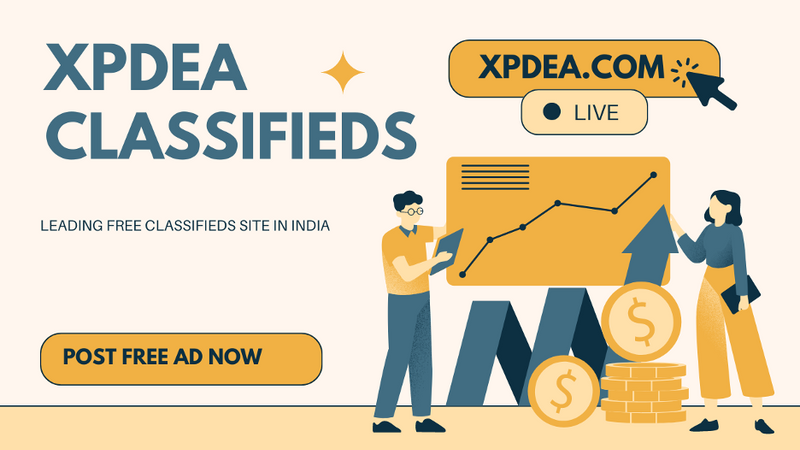The difference between creators and influencers is key in marketing. Though often used interchangeably, these roles serve distinct purposes and can impact your brand differently. This article will help you understand these differences and guide you on when to use each for maximum effect.
Key Takeaways
- Creators focus on making content to entertain or educate, while influencers aim to promote products and grow their personal brand.
- Creators often build long-term relationships with their audience through niche expertise and engaging content.
- Influencers are great for boosting brand awareness quickly and can drive trends and viral content.
- Using creators is beneficial for campaigns that require deep audience engagement and long-lasting content.
- Combining both creators and influencers can maximize your marketing impact by leveraging their unique strengths.
Understanding the Core Differences Between Creators and Influencers
When it comes to marketing, understanding the difference between creators and influencers is crucial. Both play significant roles, but their core objectives and approaches differ. Let’s dive into what sets them apart.
Defining Creators and Influencers
Creators are individuals who produce content for the sake of creativity and passion. They focus on making content about a specific niche they love. This could be anything from writing and videos to music. Creators make content to express themselves and share their interests with their audience. On the other hand, influencers aim to grow their personal brand and inspire their followers. They often create content to promote products and services, leveraging their large followings to drive engagement.
Purpose and Objectives
The main goal of creators is to produce high-quality content that resonates with their audience. They are deeply passionate about their niche and have become experts over time. Influencers, however, focus on building a personal brand and influencing their audience’s purchasing decisions. They often collaborate with brands to promote products and services, aiming to increase brand awareness and drive sales.
Content Creation vs. Brand Promotion
Creators are all about content creation. They invest time and effort into producing unique and engaging content that their audience loves. This content has long-term value and can continue to engage audiences over time. Influencers, on the other hand, are more focused on brand promotion. They use their platform to endorse products and services, often through sponsored posts and partnerships. While both creators and influencers can drive engagement, their approaches and objectives are different.
Building a lasting relationship with customers takes time. Creators focus on nurturing these relationships through consistent, high-quality content, while influencers aim to quickly engage and convert their audience through brand promotions.
Evaluating the Impact of Creators in Marketing

Long-term Content Value
When we talk about creators, one of the first things that comes to mind is the long-term value they bring to the table. Unlike influencers who might focus on quick promotions, creators often produce content that remains relevant for a long time. This means their work can continue to attract and engage audiences well after publication.
Audience Engagement
Creators are experts at engaging their audience. They know how to create content that resonates deeply with their followers. This isn’t just about getting likes or shares; it’s about building a community. When creators share something, their audience listens and interacts, making the engagement more meaningful.
Niche Expertise
Many creators have a specific niche they excel in. Whether it’s tech reviews, cooking tutorials, or fitness advice, these creators bring a level of expertise that can be incredibly valuable for brands. Partnering with a creator who is an expert in your industry can help you reach a highly targeted audience that trusts the creator’s opinions and recommendations.
Assessing the Role of Influencers in Marketing

Brand Awareness
Influencers are fantastic at boosting brand awareness. When they talk about your product or service, their followers take notice. This can lead to a significant increase in your brand’s visibility. Because these influencers have such a strong rapport with their audience, the awareness of your brand increases dramatically.
Consumer Trust and Credibility
People tend to trust influencers more than traditional ads. When an influencer recommends a product, their followers are more likely to believe it’s good. This trust can translate into higher sales and a better reputation for your brand. Remember, 69% of consumers trust influencers more than they trust information coming directly from a brand.
Trendsetting and Virality
Influencers often set trends and can make your product go viral. They have a knack for creating content that resonates with their audience and gets shared widely, which can lead to a surge in interest and sales for your product. A large following, an engaged audience, and a finger on the pulse of the latest trends are a recipe for creating viral content.
When it comes to influencers, smaller can be better. Micro-influencers, with their smaller but highly engaged audiences, can offer a higher ROI and more authentic connections with their followers.
Strategic Scenarios for Using Creators
When to Leverage Creators
Knowing when to use creators in your marketing strategy is key. Creators are best leveraged when you need high-quality content that resonates with your audience. They excel in storytelling and can help you build a strong brand narrative. Creators are your go-to if you aim to create a lasting impression and engage deeply with your audience.
Types of Campaigns Suited for Creators
Creators shine in campaigns that require detailed and engaging content. Here are some types of campaigns where creators can be particularly effective:
- Content Marketing Campaigns: Creators can produce blog posts, videos, and graphics that tell your brand’s story.
- Product Launches: Their unique content can create buzz and excitement around new products.
- Educational Campaigns: If you need to educate your audience about a complex product or service, creators can break it down into digestible content.
Measuring Success with Creators
To measure the success of your campaigns with creators, you need to track various metrics. Here are some key performance indicators (KPIs) to consider:
- Engagement Rates: Review likes, comments, and shares to gauge how well the content resonates.
- Content Reach: Measure how many people have seen the content.
- Conversion Rates: Track the number of people who took action after engaging with the content, such as making a purchase or signing up for a newsletter.
Remember, the goal is to create content that not only reaches a wide audience but also engages them deeply. By focusing on these metrics, you can ensure that your creator partnerships are driving the desired results.
Strategic Scenarios for Using Influencers
When to Leverage Influencers
Influencers are great for boosting your brand’s visibility and increasing brand awareness. They can help you reach a larger audience quickly. They have a strong rapport with their followers, making introducing your product or service easier to a wide range of people.
Types of Campaigns Suited for Influencers
Influencers excel in campaigns that need a personal touch. They can share your brand story in a genuine and relatable way. Here are some types of campaigns where influencers shine:
- Product launches
- Seasonal promotions
- Event promotions
- Social media takeovers
Measuring Success with Influencers
To measure the success of your influencer campaigns, focus on engagement rates and brand sentiment. Use social listening tools to track mentions and gauge how the audience feels about your brand. This will help you understand the impact of your campaign and make necessary adjustments.
Integrating Creators and Influencers for Maximum Impact

Combining Strengths
When creators and influencers combine their strengths, you get the best of both worlds. Creators excel at creating engaging content that resonates with their audience. Influencers, on the other hand, are great at promoting brands and reaching a wide audience. They can create a powerful marketing strategy that benefits everyone involved by working together.
Case Studies of Successful Integration
Let’s look at some examples of successful integration. One significant benefit of influencer marketing partnerships is that content produced by creators resonates with consumers significantly more than traditional brand content—for instance, a sports brand partnered with a fitness influencer and a workout content creator. The influencer promoted the brand’s new line of athletic wear, while the creator made workout videos featuring the products. This combination led to a significant increase in both brand awareness and sales.
Best Practices for Collaboration
To get the most out of your collaborations, follow these best practices:
- Clear Communication: Make sure both parties understand the goals and expectations.
- Shared Values: Ensure the creator and influencer align with your brand’s mission and values.
- Long-term Partnerships: Building long-term relationships can lead to more authentic and effective collaborations.
- Track Performance: Use social listening tools to monitor the impact of the collaboration and make adjustments as needed.
Combining creators and influencers can make your marketing strategy more effective and engaging. By leveraging their unique strengths, you can reach a wider audience and create content that truly resonates with consumers.
Choosing the Right Partner for Your Brand

Identifying Your Marketing Goals
First, you need to know what you want to achieve. Are you looking to boost brand awareness, drive sales, or create engaging content? Setting clear goals helps you find the right partner to meet your needs. Think of it as your roadmap to success.
Evaluating Potential Partners
Once you have your goals, it’s time to look at potential partners. Check their past work, audience engagement, and how well they align with your brand values. You want someone who can share your story authentically. Don’t just go for big names; sometimes, smaller creators can have a more engaged audience.
Building Long-term Relationships
Finally, think about the long-term. A good partnership isn’t just a one-time deal. It’s about building a relationship where both sides grow together. Keep your partners in the loop about how their content performs and work together to improve. This way, you both win in the long run.
Remember, in the digital age, understanding customers is crucial for business survival. Choose partners who can help you gain a comprehensive understanding of consumer needs.
Frequently Asked Questions
What is the difference between creators and influencers?
Creators make content to share their passions or knowledge, while influencers create content to promote products and grow their personal brand.
Can someone be both a creator and an influencer?
Yes, some people can be both creators and influencers. They make great content and also have a strong following to promote brands.
When should I use a creator for my marketing?
Use a creator when you need high-quality content that engages your audience over a long time. They are great for educational or entertaining content.
When is it best to use an influencer in marketing?
Influencers are best when you want to increase brand awareness or promote a new product quickly. They can help make your brand trendy and popular.
How do I measure success with creators?
Measure success with creators by looking at long-term engagement, content quality, and how well they connect with your audience.
How do I measure success with influencers?
Measure success with influencers by tracking brand awareness, engagement rates, and the impact on sales or trends.




